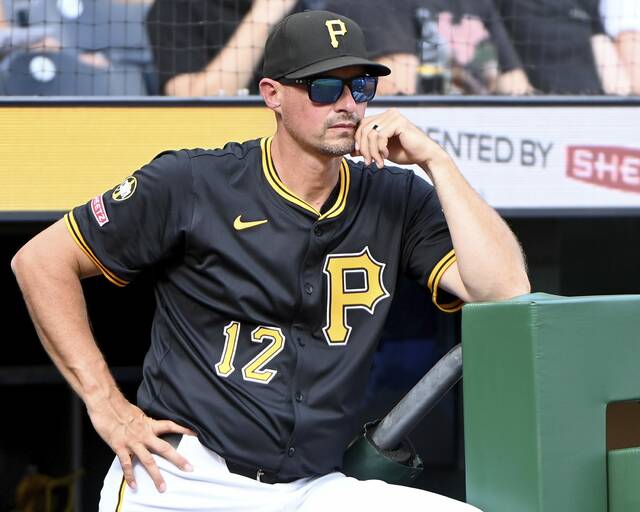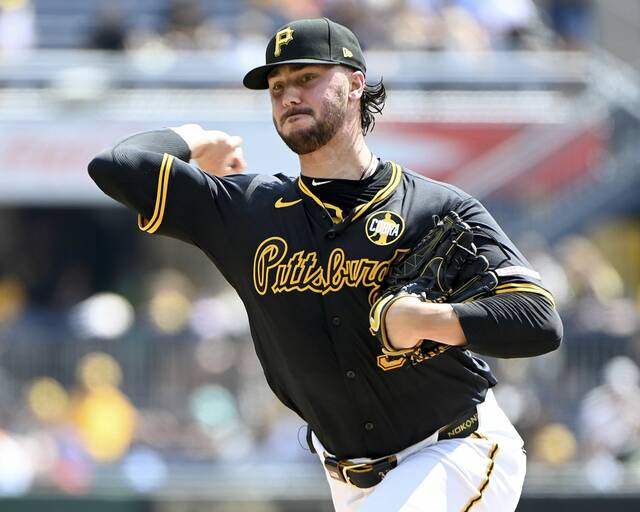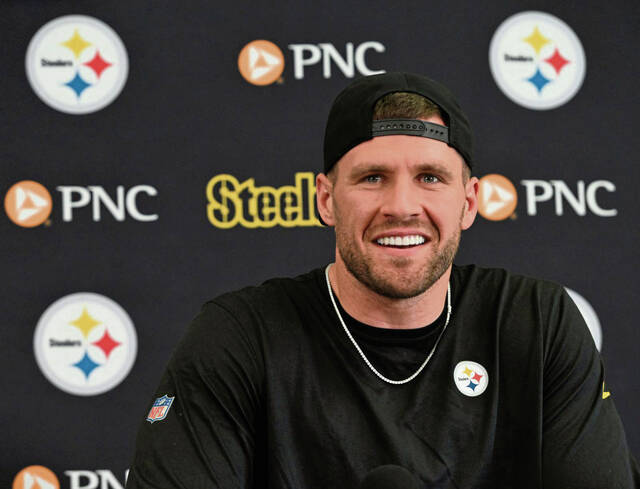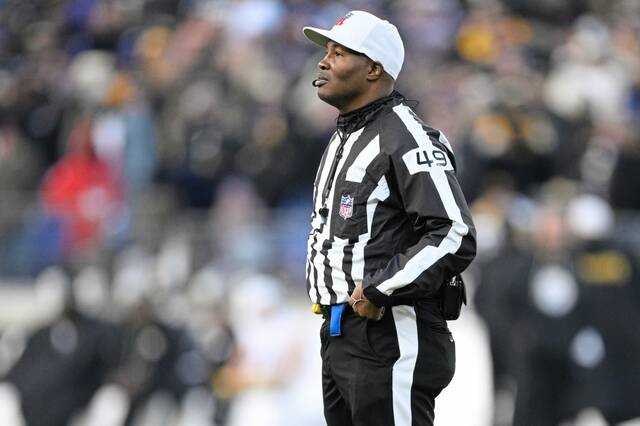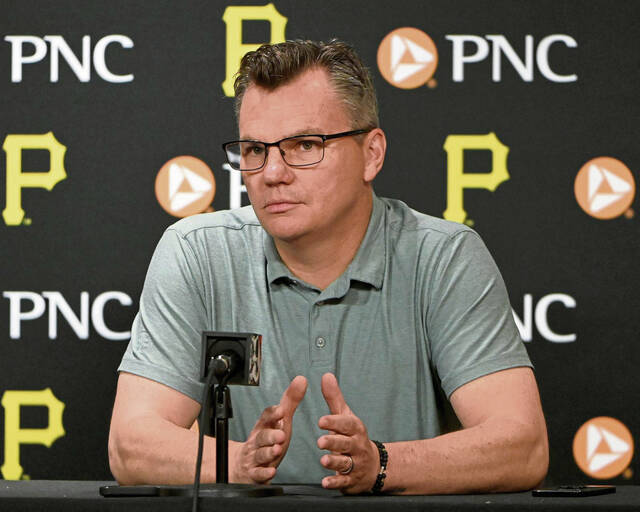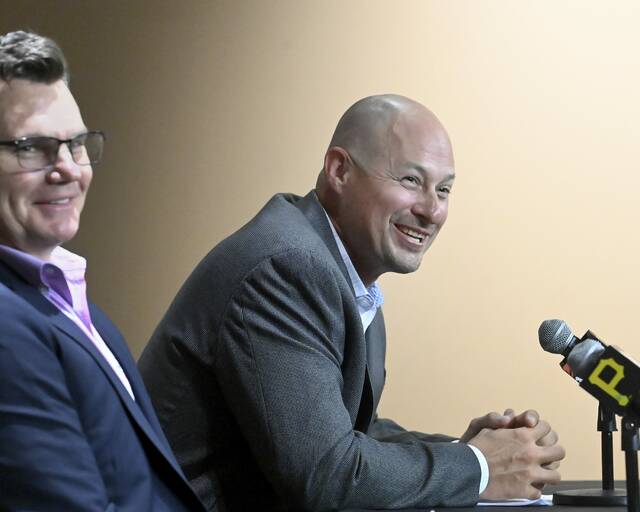The Tribune-Review sports staff is conducting a daily countdown of the best players in Pittsburgh pro and college sports history to wear each jersey number.
No. 6: Tony Pena
Few players are good enough to contribute to a team by walking out the door, but Tony Pena found a way.
But it still drove him to tears.
Pena was a catcher for the Pittsburgh Pirates from 1980-86, squatting behind home plate in 796 games. He represented the Pirates in four All-Star Games and won three Gold Gloves while slashing .286/.327/.411. He is the Tribune-Review’s sports staff’s choice for the best athlete in Pittsburgh to wear jersey No. 6.
Pena’s mother, Rosalia, was a softball player of some note in their native Dominican Republic, and she taught her son to play — and love — the game of baseball.
“I would love this game even if I wasn’t getting paid to play,” he was quoted in an article on the Society for American Baseball Research website.
But Pena’s Pirates struggled in the mid-1980s, worn down by the region’s drug trials and three consecutive last-place finishes with losses totaling 87, 104 and 98 from 1984-86.
“It was no fun, no fun at all,” he said. “There were the drug trials, the club was up for sale and we were losing, losing, losing. I am not a loser.”
After the Pirates finished 44 games out of first place in 1986, Pena was traded to the St. Louis Cardinals six days before the start of the ’87 season. The deal was not received well by Pirates fans, but the Cardinals were thrilled.
Manager Whitey Herzog said: “When you get a ballplayer of that caliber, you’ve done something. We are really happy. We paid a good price to get him, but it was worth it.”
Meanwhile, Pena and Pirates manager Jim Leyland cried at the news conference.
“I cried for a week,” Pena said. “The trade hurt me psychologically. I lost my stroke.”
Leyland, though, was on board with the deal.
“There is no question in my mind we’ve traded the best and most durable catcher in baseball,” he said. “I’ve told Tony Pena he will hit .320 this year, and I really believe that.
“We know without question we have lost an outstanding player. We also know we have acquired some very good players. The name of the game is to get as many good players as you can. What you have to do to get those players is give up an outstanding player like Pena.”
Leyland was a little off in projecting Pena’s batting average; he just had the circumstances wrong. Pena hit .214 in 1987 but .381 in the NLCS and .409 when the Cardinals lost to the Minnesota Twins in the ’87 World Series.
The price for Pena was steep.
The Pirates received outfielder Andy Van Slyke, catcher Mike LaValliere and pitcher Mike Dunne. Van Slyke and LaValliere were important fixtures in the Pirates’ three consecutive NL East championships (1990-92).
Van Slyke, who eventually pushed Barry Bonds from center field to left field, hit 48 home runs, drove in 249 runs and won two Gold Gloves in those title-winning seasons. LaValliere was the Pirates’ regular catcher for eight seasons. Dunne won 13 games in 1987 but was traded to Seattle two years later.
Pena played 18 seasons in the majors, finally retiring from the Houston Astros in 1997. He managed the Kansas City Royals from 2002 until he resigned 33 games into the ’05 season. He also spent 12 years as a coach with the New York Yankees.
Pena’s stiffest competition for the best to wear No. 6 comes from former Pirates infielder Rennie Stennett, who compiled a .278 batting average in nine seasons in Pittsburgh. That didn’t set him apart from others, however.
He did something Sept. 16, 1975 that might never be duplicated. He set an MLB record by recording seven hits — four singles, two doubles and a triple — in seven at-bats in a 22-0 victory against the Chicago Cubs at Wrigley Field. He broke a record set by 43 others, including Paul Waner and Ty Cobb, who were 6 for 6. Stennett donated the bat he used that day to the National Baseball Hall of Fame and Museum in Cooperstown, N.Y.
Others:
• Outfielder Starling Marte, who would have been the Pirates’ best player this season if he hadn’t been traded to Arizona, also wore No. 6. He hit .287 with 108 home runs and 420 RBIs in eight seasons while winning two Gold Gloves. For the record, he’s hitting .317 with the Diamondbacks.
• Catcher Smoky Burgess was a four-time All-Star with the Pirates, hit .295 in six seasons and helped backstop Vernon Law to the 1960 Cy Young Award.
• Quarterback Bubby Brister wore No. 6 for seven seasons with the Pittsburgh Steelers, throwing for 10,104 yards and 51 touchdowns and leading the team to the playoffs in 1989. He is perhaps best known for refusing to enter a game in 1991 as a fourth-quarter replacement for Neil O’Donnell when the Steelers were losing to the Houston Oilers, 31-6.
“I don’t mop up for anybody,” Brister said.
It was the last loss of Chuck Noll’s career.
Check out the entire ’Burgh’s Best to Wear It series here.



